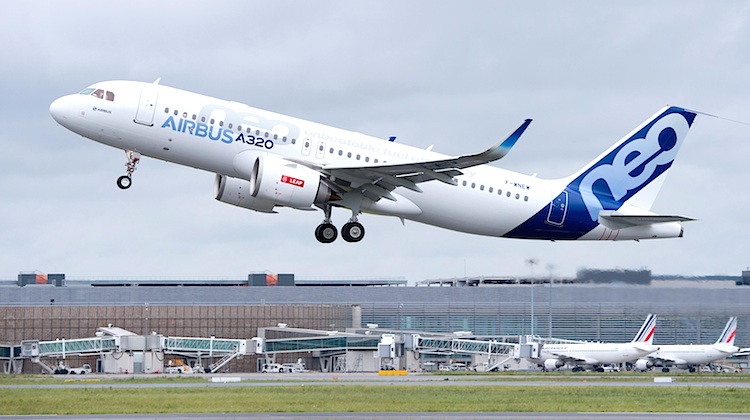
Airbus has received type certification from the European Aviation Safety Agency (EASA) and US Federal Aviation Administration (FAA) for its A320neo (new engine option) powered with CFM LEAP-1A engines.
Certification of the A320neo with CFM powerplants comes about six months after regulators approved the Pratt & Whitney’s Pure Power PW1100G-JM engine variant of the updated single-aisle workhorse.
Airbus chief executive Fabrice Bregier, who made the announcement at the company’s innovation days media briefings in Hamburg on Tuesday (European time), said the certification was a key milestone for the A320neo program, which aims to lift production from 42 aircraft deliveries a month in 2015 to 60 a month by 2019.
“These two engines are very good engines,” Bregier said.
“We need both to cope with our ramp up challenges. You will see, I think, the first CFM-powered engine in service probably this summer, July or August.”
“This is in line with the plan.”
Airbus had two test aircraft accumulate about 1,000 flight hours and 350 flights with the CFM engines.
Deliveries of A320neos with the Pratt & Whitney engines began in January, with Lufthansa the launch customer. Indian low-cost carrier Indigo became the second operator of the type in March.
Oneworld alliance member Qatar Airways had been scheduled to be the first airline to take delivery of the neo before the end of 2015.
However, it declined to accept the aircraft while Pratt & Whitney developed a fix for the PW1100G, which currently has to idle for between two and six minutes after start-up before the aircraft can taxi under its own power.
As a result, Airbus has been forced to park completed A320neos as Pratt & Whitney worked on a fix to its geared turbofan engine.
While Bregier conceded the Pratt & Whitney A320neo had a “difficult start”, he said the aircraft’s performance in terms of fuel savings and reduced noise footprint has been better than expected.
“The performance is even higher than what we expected but we came into a series of maturity issues, teething problems – whatever the name – which are about to be solved.
“This is actually a positive message.”
In this part of the world, Qantas has ordered 99 A320neo family aircraft to be powered by LEAP-1A engines.
The first neos were due to arrive from the end of calendar 2017, Qantas said at its 2015/16 first half financial results in February.
The aircraft were ostensibly destined for Jetstar as older A320s are paid off and to cover growth, although the company has not ruled out operating the aircraft on Qantas mainline domestic services to replace its Boeing 737-800 fleet.
Airbus chief operating officer Tom Williams said he expected deliveries of Pratt & Whitney powered A320neos would pick up again in the second half of 2016 as the engine maker developed a software fix and some other technical changes.
This would help clear the “couple of dozen” aircraft which have been built, painted and finished but unable to be delivered because of the engine issue.
“We’ve been building gliders as we’ve gone through the first half of the year and we’ve got a number of gliders parked in Toulouse and in Hamburg,” Williams said.
“We’d very soon got the first of the new good engines from Pratt & Whitney coming through thank God.
“We’d expect to have during the summer we’ll be seeing the first of the new Pratt engines. I think we can then quickly pick up.”











